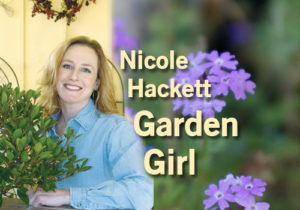Spring into action with flowering garden options
 At this time of year, nursery shelves are filled with flowers and the weather is wonderful for planting.
At this time of year, nursery shelves are filled with flowers and the weather is wonderful for planting.
There are so many great choices for folks to install. Penstemon, salvia, sea lavender, calibrachoa (million bells) and alstroemeria are some of the showiest and most flower-tastic plants to install in a Clayton Valley garden or landscape.
Healthy soil, healthy plants
First and foremost, you’ll need healthy soil for flowering plants. Whether in a container or in the ground, the soil needs to be dark and loose. Work in rich soil conditioners to existing soil, choosing a product that looks like potting soil, smells a bit like manure and doesn’t have too much visible wood.
Penstemon is one of the simplest, yet most attractive evergreen perennials available. Depending on the selection, expect penstemon to grow 2-3 feet tall and wide. Trumpet-shaped flowers are born in rows along dark green stems. Penstemon has a color for every palette: reds, pinks, white, purple and many bi-colors. This perennial blooms May through October and attracts hummingbirds.
Salvia is a huge group of woody and herbaceous perennials. The woody selections have tiny, two-lipped flowers in pinks, red and lavenders. The herbaceous selections have tight stacks of teeny flowers that stand above larger green leaves. Herbaceous means that the plant completely dies back in the autumn and returns in the spring. Herbaceous plants live for many years and are frost-proof.
Some favorite salvia to consider are Hot Lips (red and white bi-color blooms), leucantha (commonly called Mexican sage) with fuzzy, purple flowers and white tips, and May Night, an herbaceous selection that reaches 2 feet tall and wide and creates a stunning impact in any full sun garden bed.
Bee friendly sea lavender
 Sea lavender is old-fashioned and recognizable. Folks have seen it on walks through the neighborhoods for years. It has large, lettuce-like dark green leaves. Stems stand 18-30 inches tall and hold purple flower clusters that can be as large as 6 inches wide. This evergreen perennial is nearly everblooming. Bees and butterflies use the flower clusters as landing pads. Occasionally, the winter gets too frosty and some sea lavender may succumb to the cold temperatures, but the rewards are worth the risk.
Sea lavender is old-fashioned and recognizable. Folks have seen it on walks through the neighborhoods for years. It has large, lettuce-like dark green leaves. Stems stand 18-30 inches tall and hold purple flower clusters that can be as large as 6 inches wide. This evergreen perennial is nearly everblooming. Bees and butterflies use the flower clusters as landing pads. Occasionally, the winter gets too frosty and some sea lavender may succumb to the cold temperatures, but the rewards are worth the risk.
Calibrachoa is a type of petunia that doesn’t get sticky and seldom suffers from petunia bud worms. These million bells are best planted in raised beds, hanging baskets and containers, because they have a desirable cascade to their growth. The color selections are outrageous, with so many fun combinations. They only last two or three years but are awesome when blooming March through October. They require hard prunes occasionally and like regular fertilizer formulated for blooms.
If alstroemeria weren’t so expensive, it would be the perfect perennial. Azalea-shaped flowers surge into waves of blooms all growing season long. Alstroemeria is available in standard sizes and dwarf selections. They can be divided and shared. Alstroemeria also serves as a great cut flower.
While there are many amazing perennials to grow, this list of plants are nearly sure things in this area. As you peruse garden centers, ask to see these selections.

Nicole Hackett
Nicole is the Garden Girl at R&M Pool, Patio, Gifts and Garden. You can contact her with questions or comments by email at gardengirl94517@yahoo.com
